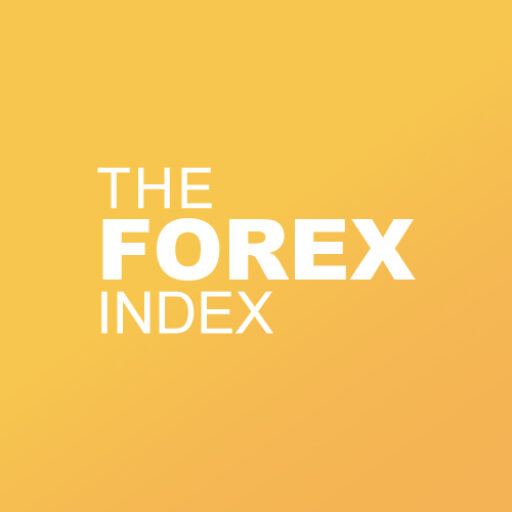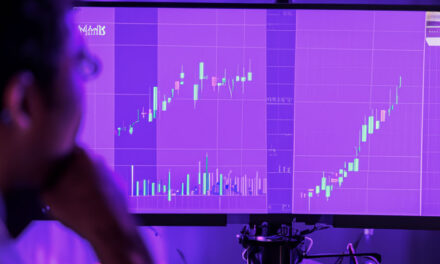In today’s fast-paced financial markets, staying ahead of the game is essential for successful trading. Traders are constantly looking for innovative tools and strategies to gain a competitive edge. Machine learning, a branch of artificial intelligence, has emerged as a powerful approach to analyzing and predicting market behavior. In this article, we will explore the potential of machine learning models in Forex trading and how they can be applied from theory to the trading floor.
Unlocking the Potential of Machine Learning in Forex Trading
Machine learning is revolutionizing the world of finance, and Forex trading is no exception. By leveraging vast amounts of historical data, machine learning algorithms can uncover hidden patterns and relationships that human traders may overlook. These models can then be used to make more accurate predictions about future market movements.
One of the key advantages of machine learning in Forex trading is its ability to adapt and learn from new data. As market conditions change, these models can adjust their strategies accordingly, ensuring continuous improvement and adaptation to evolving market dynamics.
However, it’s important to note that machine learning models are not a magic bullet. They are just tools that help traders make better decisions. It still requires human expertise to interpret the results and make informed trading decisions.
Using Machine Learning to Develop an Edge in Forex Markets
To develop an edge in Forex markets, traders need to go beyond traditional technical analysis and incorporate machine learning techniques. These models can analyze vast amounts of data, including price movements, economic indicators, and news sentiment, to identify hidden patterns and correlations.
By using machine learning, traders can gain a deeper understanding of market dynamics and make more informed trading decisions. For example, sentiment analysis can help identify the impact of news events on currency movements, allowing traders to react more quickly and effectively.
Moreover, machine learning models can help traders identify trading opportunities that may be missed by manual analysis alone. These models can scan multiple currency pairs simultaneously, looking for patterns and relationships that could signal potential trades.
An Overview of Machine Learning Models for Forex Trading
There are various machine learning models that can be applied to Forex trading. Each model has its strengths and weaknesses, and choosing the right model depends on the specific trading strategy and objectives.
One popular machine learning model is the Support Vector Machine (SVM). This model is particularly effective in classifying market conditions and predicting price movements. SVM uses a mathematical concept called the kernel to transform the original data into a higher-dimensional space, making it easier to separate different market states.
Another widely used model is the Recurrent Neural Network (RNN). This model is well-suited for analyzing time-series data, making it ideal for Forex trading. RNNs can capture temporal dependencies and patterns, enabling traders to predict future price movements based on historical data.
Exploring the Benefits of Machine Learning in Forex Trading
Machine learning offers several benefits for Forex traders. Firstly, it can help traders make more accurate predictions about market movements, leading to higher profitability. By leveraging historical data and advanced algorithms, machine learning models can identify patterns and trends that may not be apparent to human traders.
Secondly, machine learning models can help traders reduce emotional biases and make more objective trading decisions. Emotions like fear and greed can often cloud our judgment and lead to irrational trading behavior. Machine learning models, on the other hand, are driven purely by data and algorithms, removing any emotional biases.
Furthermore, machine learning models can analyze vast amounts of data in real-time, allowing traders to react quickly to changing market conditions. This real-time analysis can uncover hidden opportunities and help traders stay ahead of the curve.
Optimizing Trading Strategies with Machine Learning Models
Machine learning models can also be used to optimize trading strategies. By backtesting various trading algorithms on historical data, traders can identify the most profitable strategies and refine them using machine learning techniques.
For example, traders can use a machine learning algorithm to optimize the parameters of a moving average crossover strategy. The algorithm can automatically adjust the length of the moving averages based on historical data, finding the optimal values that maximize profitability.
Moreover, machine learning models can identify market regimes and adjust trading strategies accordingly. This adaptive approach ensures that the trading strategies are constantly evolving and adapting to changing market conditions, improving performance and reducing the risk of potential losses.
Evaluating the Risks and Rewards of Machine Learning in Forex
While machine learning offers numerous benefits, it also comes with its own set of risks. One of the main challenges is overfitting, where the model performs well on historical data but fails to generalize to new, unseen data.
To mitigate the risk of overfitting, traders need to ensure that their machine learning models are robust and capable of adapting to new market conditions. This can be achieved through rigorous testing and validation, using out-of-sample data to assess the model’s performance.
Additionally, traders need to be aware of the limitations of machine learning models. These models are based on historical patterns and assumptions, and they may not capture unpredictable events or black swan events that deviate from historical norms.
Exploring the Impact of Machine Learning on Forex Markets
Machine learning is not only transforming the way traders analyze and predict market movements – it is also reshaping the Forex markets themselves.
Firstly, machine learning models have the potential to democratize trading. These models can be deployed on cloud platforms, making them accessible to retail traders who may not have access to sophisticated trading systems. This levels the playing field and gives individual traders the opportunity to compete with institutional traders.
Secondly, machine learning models can lead to increased market efficiency. By analyzing vast amounts of data in real-time, these models can identify mispriced assets and exploit market inefficiencies. This, in turn, leads to more accurate pricing and a more efficient allocation of capital.
Leveraging Machine Learning Models for Improved Forex Trading Performance
To leverage machine learning models for improved Forex trading performance, traders need to follow a systematic approach. Firstly, it’s important to define clear objectives and trading strategies. This includes specifying the timeframes, currency pairs, and risk management rules that will guide the trading process.
Secondly, traders need to gather high-quality data for training and testing their machine learning models. This data should include a diverse range of market conditions and economic events to ensure robustness and adaptability.
Lastly, traders need to continuously monitor and evaluate the performance of their machine learning models. This involves regular backtesting, assessment of risk-adjusted returns, and adjustment of model parameters as needed.
Applying Machine Learning Techniques to Forex Trading
Applying machine learning techniques to Forex trading requires a combination of technical knowledge and domain expertise. Traders need to have a solid understanding of machine learning algorithms, programming languages, and statistical concepts.
Additionally, traders need to have a deep understanding of Forex markets and the factors that influence currency movements. This includes macroeconomic indicators, geopolitical events, and central bank policies.
By combining these skills, traders can develop effective machine learning models that can enhance their trading strategies and improve their overall performance in Forex markets.
From Theory to Trading Floor: Applying Machine Learning Models to Forex Trading
Machine learning models have come a long way from being theoretical concepts to practical tools used on the trading floor. As technology advances and data availability improves, these models are becoming more sophisticated and accurate.
Traders who embrace machine learning and apply it to Forex trading will have a unique advantage in predicting market movements and making profitable trading decisions. However, it’s important to remember that machine learning is not a silver bullet. Traders still need to exercise sound judgment and combine machine learning with their own expertise to achieve optimal results.
In conclusion, machine learning models have the potential to revolutionize Forex trading. By harnessing the power of data and algorithms, traders can gain a deeper understanding of market dynamics, make more accurate predictions, and optimize their trading strategies. While there are risks involved, those who embrace machine learning and adapt their trading approach will be well-positioned for success in the ever-evolving world of Forex trading.






